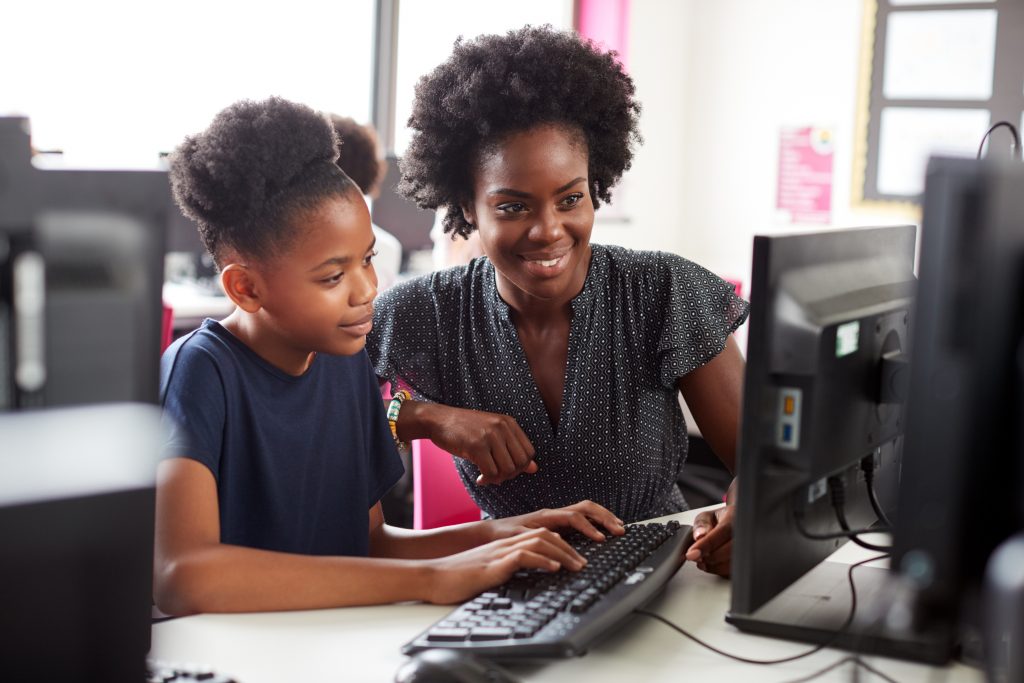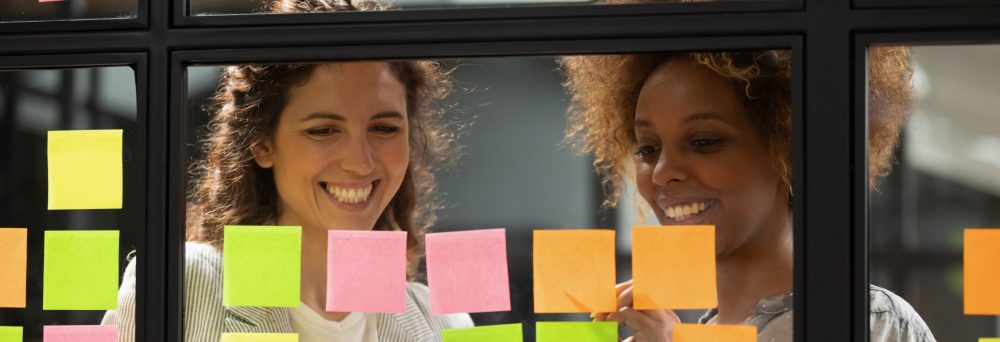As the world marks International Literacy Day 2021, Esther Prins considers what it would mean to narrow the digital divide and how we can foster a more creative and critical use of technology for all

The COVID-19 pandemic has exposed stark inequalities in access to educational opportunities, particularly those requiring digital technologies. The 2021 International Literacy Day theme, Literacy for a human-centred recovery: Narrowing the digital divide, offers a chance to reflect on digital access and why it matters for human potential.
When we hear about the ‘digital divide’, we typically think of having a smartphone, other mobile devices or a computer, plus reliable and affordable internet. But access involves much more than these physical resources. In this post, I discuss more complex ways of conceptualizing access. We cannot close the digital divide only by increasing broadband internet, technology ownership and technical know-how. Youth and adults must also be able to use digital tools creatively, critically and strategically to produce new knowledge.
Jan Van Dijk’s 2006 analysis of the digital divide is still relevant today. He suggests that the digital divide encompasses five forms of inequality:
- technological (technological opportunities)
- immaterial (life chances, freedom)
- material (economic, social, and cultural capital; resources)
- social (positions, power, participation)
- educational (capabilities, skills).
Many educators, researchers and policy-makers focus on the technological or educational dimensions, and pay less attention to the other, often less visible, ways in which digital access shapes what people are able to do and to be – their human capabilities (Nussbaum, 2000).
Van Dijk delineates four types of digital access: motivational, material, skills and usage. Many schools, libraries, adult and family learning programmes, and community organizations provide material access via the internet, hotspots, computers, and the like. These resources are crucial for low-income and rural communities. However, to harness digital technologies’ full educational potential, people also need interest, motivation and confidence (motivational access), digital skills, and meaningful opportunities to use technologies, especially for knowledge creation and critical thinking (usage access).
Motivational access would mean, for example, easing older learners’ computer anxiety or challenging the notion that coding and gaming are masculine activities. Many adult and family learning programmes teach digital skills, but often these efforts focus on what Van Dijk calls operational and information processing skills rather than strategic (critical) skills – in other words, using technological resources to accomplish personal or social goals.
Usage access is where we find the most profound inequalities. If programmes neglect this domain, they may unintentionally widen the gap between lower- and higher-income individuals and communities. Why? Because people with higher incomes and education use technologies in different ways and therefore gain more socio-economic and educational advantages. For example, Neuman and Celano (2006) found pronounced differences in how families in higher- versus lower-income Philadelphia communities used library computers. Merely providing new technologies was insufficient; parents also needed guidance on how to use computers interactively to foster children’s learning.
The ‘new’ digital divide, then, stems from what people do with technologies (Dolan, 2016; Van Dijk, 2006). This divide is between the ‘cans’ and the ‘cannots’ (Dolan, 2016), denoting the ability to actively use technology to produce (create products, communicate thoughts), not just to consume (passively using technology for rote learning, entertainment, etc.).
Hilary Janks’ (2010) interdependent model of critical literacy can help educators address this problem. This model includes four dimensions: access, diversity, power and design. Many adult and family learning programmes focus on digital access, or helping people acquire skills that are valued by the dominant society, such as how to use computer and word-processing software, find information online, and so forth. However, they may ignore or discount the diversity of digital literacies that people already practice, such as texting, social media, popular culture or gaming. Educators can use these digital practices as an entry point for instruction, especially to increase motivation and interest. They also need to help learners understand why society values certain digital skills and practices more than others and to analyse digital resources and information critically (power). Addressing power means asking questions about who produced the content, its validity, whose interests it serves, and its effects on how people think and act. A current example is understanding online misinformation about COVID-19 vaccines.
Design – the ability to produce knowledge – is the final piece. One reason digital tools are so appealing is that they offer myriad possibilities to create something new, whether a digital story (Mooney & Prins, 2015; Prins, 2017) or a piece of art. By producing digital artifacts, learners can have more control over their stories and come to see and represent themselves in new ways. This ability to make meaning is central to human agency. Therefore, educators need to equip learners to use digital technologies to create knowledge. Digital literacy does not magically lead to empowerment. Nonetheless, in many parts of the world, the ability to deploy digital tools and to critique and create digital texts is becoming more central to human flourishing.
Esther Prins is Professor of Education and Co-Director of the Goodling Institute for Research in Family Literacy and Institute for the Study of Adult Literacy at The Pennsylvania State University, and is a Visiting Research Fellow at the UNESCO Institute for Lifelong Learning.
References
Dolan, J. E. (2016). Splicing the divide: A review of research on the evolving digital divide among K–12 students. Journal of Research on Technology in Education, 48(1), 16-37.
Janks, H. (2010). Literacy and power. Routledge.
Mooney, A., & Prins, E. (2015, June). Digital storytelling in family literacy programs. Practitioner’s Guide #5. Goodling Institute for Research in Family Literacy. https://files.eric.ed.gov/fulltext/ED587554.pdf
Neuman, S. B., & Celano, D. C. (2012). Worlds apart: One city, two libraries, and ten years of watching inequality grow. American Educator, 36(3), 13-23.
Nussbaum, M. C. (Ed.). (2000). Women and human development: The capabilities approach. Cambridge University Press.
Prins, E. (2017). Digital storytelling in adult education and family literacy: A case study from rural Ireland. Learning, Media and Technology, 42(3), 308-323.
Van Dijk, J. A. (2006). Digital divide research, achievements and shortcomings. Poetics, 34(4-5), 221-235.

Effectivement, disposer du matériel numérique ne suffit pas, mais l’utiliser dans
toutes ses dimensions, c’est mieux.
C’est un complexe processus dans lequel nous devons nous engager nous tous ce 8 septembre 2021, journée internationale d’alphabétisation, en vue de nous rappeler notre contribution à réduire au maximum l’écart numérique existant.